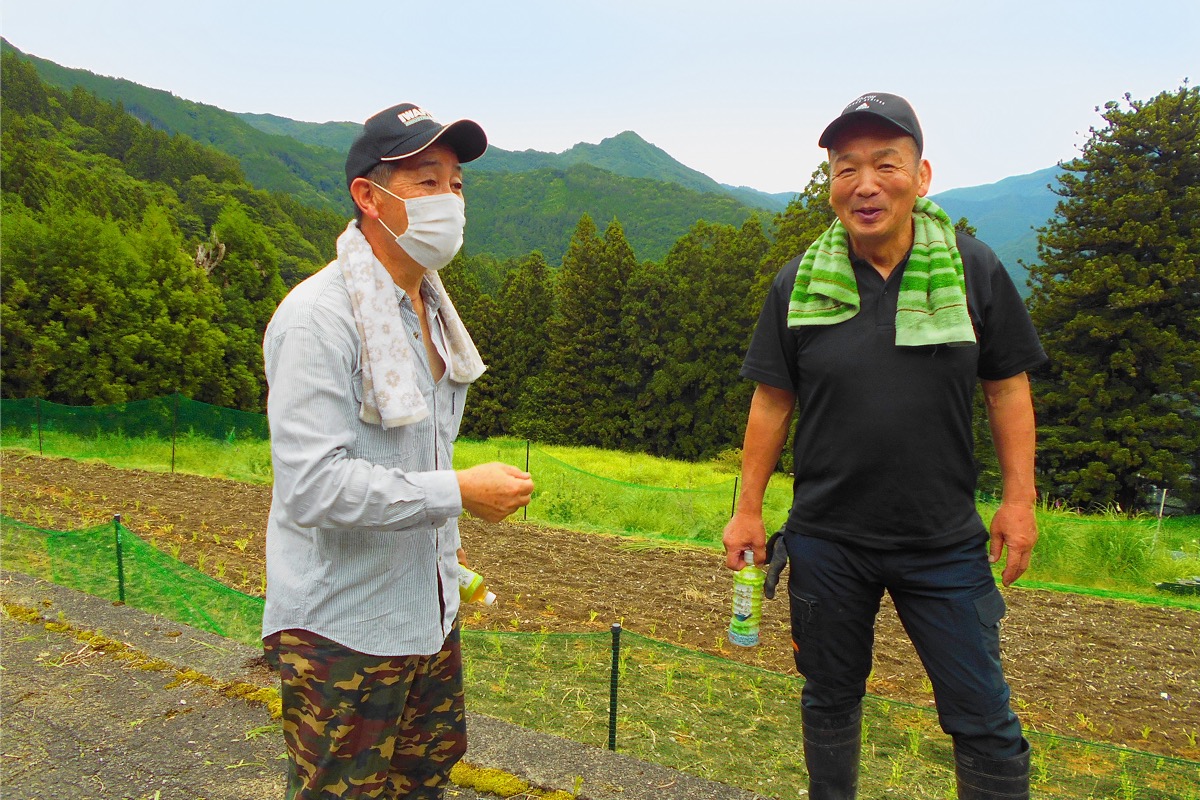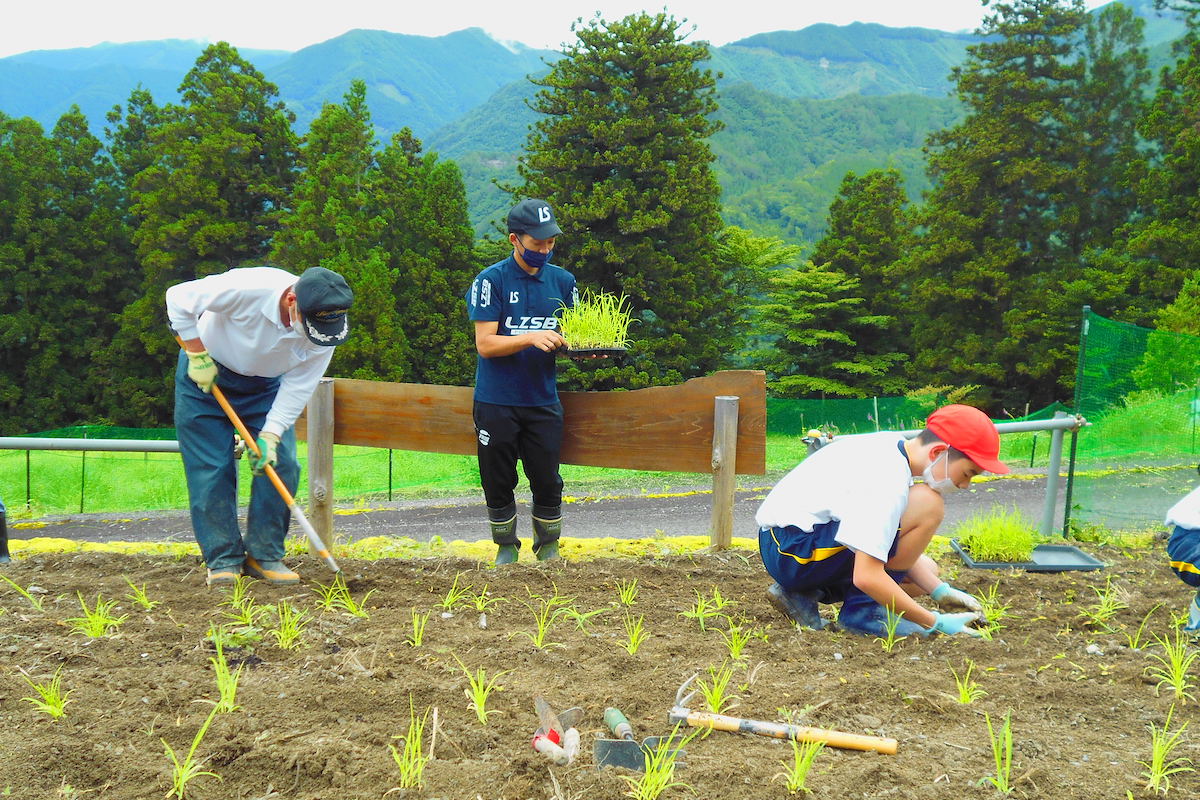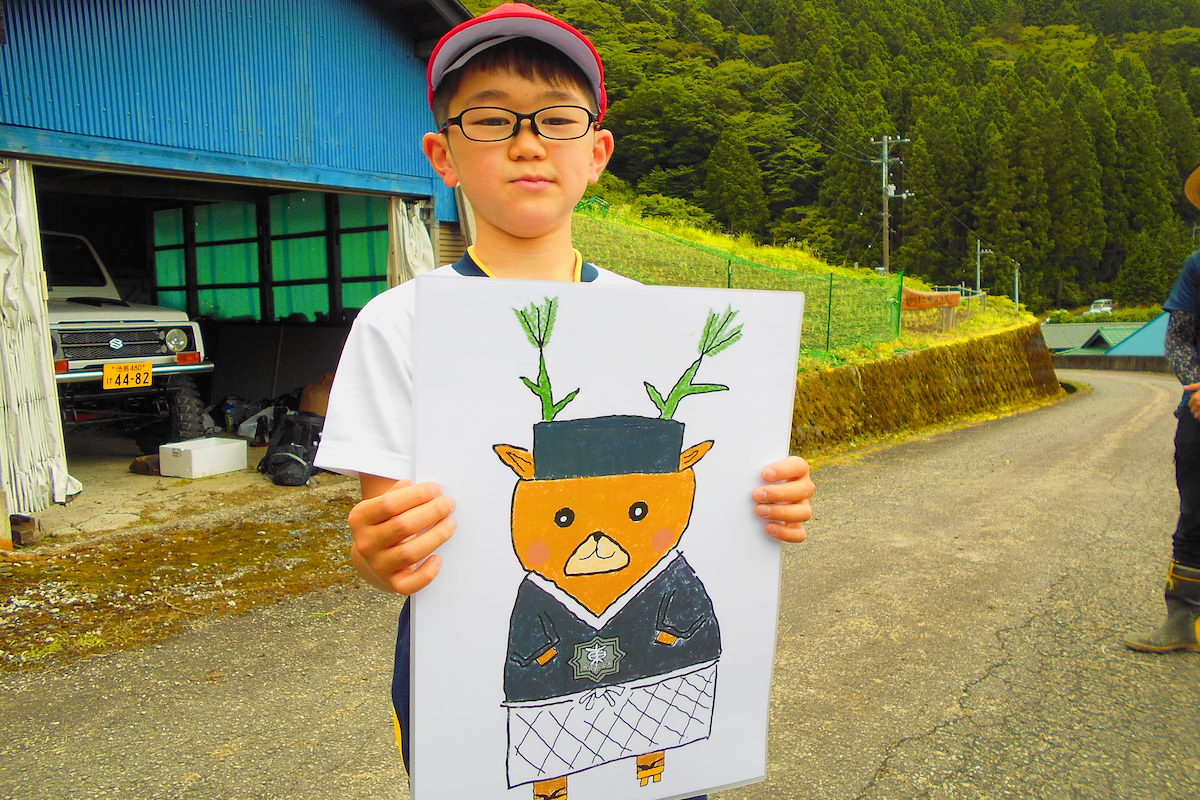Inheriting the Traditions of Millet Farming in Miyoshi City’s Iya Valley – Part 3
2021.07.23
Known for as a place for growing millet due to its unique environment, the traditional methods for growing millet in Miyoshi City’s Iya Valley are being passed on to a new generation. Recently, 6th graders from the Higashi-Iya (East Iya) Elementary School planted this year’s crop of yatsumata millet under the guidance of volunteers from the Higashi-Iya Millet Production Association.
Millet for the Future
When the seedlings of the yatsumata millet were fully planted in the two fields, I spoke again with the chairman of the Millet Association, Yoshikazu Sugihira, who seemed particularly satisfied with the performance of the school children. “As I expected, they were able to plant it pretty quick since this isn’t their first time.”
Not only do the Higashi-Iya kids learn how to plant millet grain here on the Associations’s farm, but at their elementary school they also grow millet at the school garden, which is then utilized for their school lunches as well as for cooking together with their parents. No doubt, the students are very familiar with the crop.
The school staff at the planting event were also pleased with the results. “It’s great to interact with different people of the area, and to experience these traditions first-hand, “ commented their teacher. “And I’m happy that such activities can increase the student’s relationships with the local people of Higashi-Iya.”
At the closing ceremony the children also unveiled their most recent project, the mascot character they created for the Higashi-Iya Millet Production Association. Named “Shika-maru”, it is designed to be one of Iya’s many deer, with yatsumata millet sprouts for antlers while wearing traditional chef’s clothing due to being “a master of making Iya soba (buckwheat noodles)”. In the future, the Association intends to use the character for promoting their products.
“The yatsumata we planted today will be harvested at the end of September or early October,” added association chairman Sugihira as he spoke of coming together again this autumn. “I’ll keep an eye on them to make sure they grow well, and let’s hope we can continue to do our best together.”
Fortunately the Iya people recognize the importance of their long-held traditions, and hopefully they will continue to cherish this almost-lost millet farming culture for generations to come.
This fall I hope to do a follow up article detailing the harvest as well as introduce various dishes utilizing Iya’s millet. But till then, if you would like to sample some of the local millet, it is both sold in packages and prepared in meals at the Oku-Iya Hotel and Cafe in Higashi Iya (also called Taniguchi Shouten).
(Text & Photos by: Shaun Lamzy)
Related Posts
-
Exploring Oboke Gorge – Part 2 | A Place for Food, Fun… and Monsters?!
The thrilling cliffs of Oboke Gorge are formed by the mighty Yoshino River as it cuts its way throug
2023.03.21
-
Exploring Oboke Gorge – Part 1 | A Natural Wonder of Miyoshi City
The mighty Yoshino River flows across much of Shikoku, and as it cuts its way through the rugged mou
2023.03.20
-
Iya Kanko Ryokan – Part 3 | Inheriting the Tastes of the Iya Valley
Just a few minute walk from the famed Kazurabashi Vine Bridge, the Iya Kanko Ryokan has been welcomi
2023.03.19
-
Iya Kanko Ryokan – Part 2 | A Family-Run Business Where Life is a Juggle
The Kazurabashi Vine Bridge is one of the most renowned sights of the Iya Valley, and just a couple
2023.03.18
-
Iya Kanko Ryokan – Part 1 | A Traditional Inn near the Kazurabashi Vine Bridge
Acclaimed as one of Japan’s Three Unusual Bridges, the Kazurabashi Vine Bridge is one of the most fa
2023.03.17
-
The Shikoku “Yukigassen” Snowball Fight – Part 2 | The Heat of the Battle in Icy Conditions
The 19th annual “Yukigassen” Snowball Fight Tournament was held recently in the deep mountains of Mi
2023.02.19



















